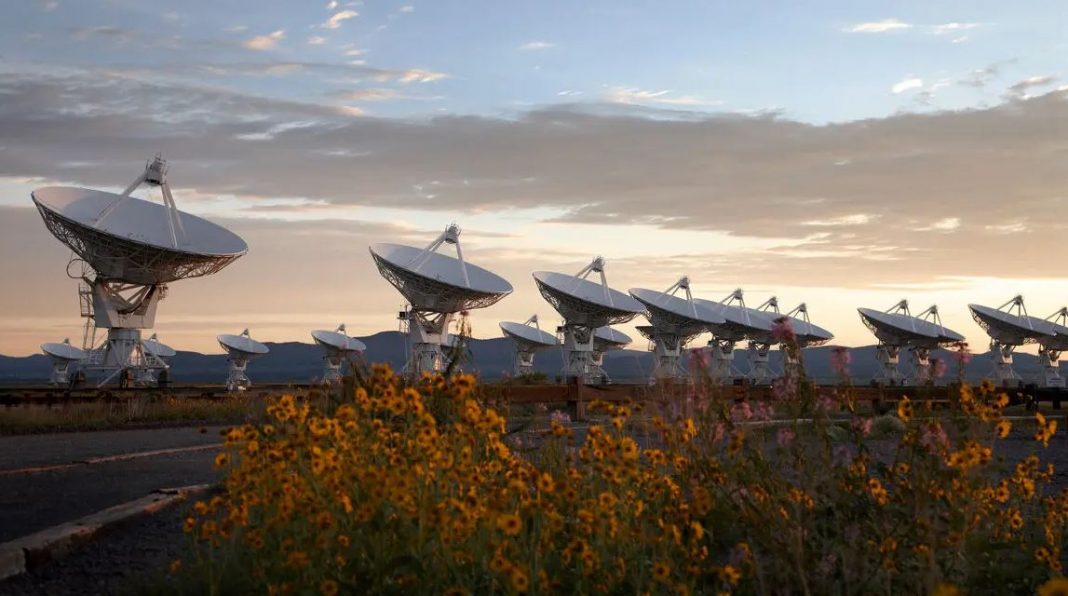On Wednesday night, scientists from across the world said they had found evidence of the cosmic background noise produced by gravitational waves.
Thousands of supermassive black holes, some as massive as a billion suns, sit at the centres of ancient galaxies up to 10 billion light-years away, and the scientists believe that these gravitational waves are the collective echo of these black holes as they slowly merge and generate ripples in space-time.
More than 15 years after NANOGrav started collecting data, the results have been eagerly awaited. So far, findings have been claimed to be in line with Albert Einstein’s general theory of relativity, which explains how matter and energy distort space-time to produce gravity. This cosmic hum may reveal novel kinds of stuff that may have existed immediately after the Big Bang 13.7 billion years ago when more data is collected to better understand how the universe reached its present structure.
In 1993, two scientists were awarded the Nobel Prize in Physics for their work in developing a mechanism to indirectly measure the impact of gravitational waves by observing the behaviour of fast rotating stars called pulsars; their work led to the discovery of the signal.
The evolutionary history of these systems and the surrounding galaxies may be better understood by investigating the gravitational-wave background if the signal indeed come from pairs of circling supermassive black holes. There are other possible sources of the gravitational-wave background, such as cosmic strings, which are theoretical rips in space-time.
It’s also possible that this is a leftover from the Big Bang, much as the cosmic microwave background, which led to key discoveries about the cosmos’s structure about 400 million years after the Big Bang. Dr. Mingarelli argued that the gravitational-wave background, as it would have been emitted practically instantly, would be an even better primordial probe.
Researchers examined the pulsars’ lighthouse properties in an effort to identify the gravitational-wave background. The radio waves they send out at regular intervals allow us to use them as cosmic clocks. According to Einstein’s general theory of relativity, when gravitational waves pass by pulsars, they should cause the distance between the pulsar and Earth to stretch or contract, so altering the amount of time it takes for radio transmissions to reach Earth.
Instead of creating a new instrument specifically for this purpose, the NANOGrav team used preexisting radio telescopes like the Very Large Array in New Mexico, the Green Bank Telescope in West Virginia, and the Arecibo Observatory in Puerto Rico (before its tragic collapse three years ago).
The NANOGrav team revealed its findings in 2020 after studying the time of 45 pulsars for over 12 years. Dr. Siemens stated that even then, the team spotted promising clues of a gravitational-wave background, but they needed to monitor more pulsars for longer periods of time to establish that they were actually associated before they could declare a finding.
Wednesday has come and gone. The findings of independently gathered data are now being published by each project, and they all point to the presence of a gravitational-wave background. With 15 years of observations from 67 pulsars, each observed for at least three years, the NANOGrav team has the biggest data collection.
The results have a confidence level of 3.5–4 sigma, which is close to the 5-sigma threshold often required by physicists to announce a smoking-gun discovery. Dr. Mingarelli calculated that the probability of seeing such a result by chance is around 1 in 1,000 years.
Even though this is preliminary evidence, the findings are intriguing, according to University of Michigan astronomer Marcelle Soares-Santos, who was not engaged in the study. She remarked, “This is something that the community has been anticipating for quite a while,” and she added that the results were bolstered by independent observations from other pulsar timing consortia.
Dr. Soares-Santos cautioned that it was still too early to determine what effect a gravitational-wave backdrop would have on future investigation. Many NANOGrav researchers speculate that the signal originates from the inward spiralling of supermassive black holes, which would add to the current understanding of how early galaxies merged to form larger and larger systems of stars and dust, which eventually settled into the complex structures observed today.
If the waves can be traced back to the Big Bang, however, we may learn more about the cosmic expansion or the nature of dark matter, the unseen glue that scientists believe binds the universe together. We may even learn about the existence of previously unknown particles or forces. (It has been pointed out by experts that the gravitational-wave background may have numerous origins, making it difficult to determine the relative contributions of each.)
The NANOGrav group is hard at work analysing the 25 years’ worth of data from 115 pulsars collected by gravitational-wave groups throughout the globe. Dr. Siemens predicted that the findings will be more significant than a 5-sigma discovery and claimed they would be made public in a year or two.
However, the origin of the backdrop of gravitational waves may not be confirmed for a few more years. Using this information, scientists are piecing together maps of the cosmos and searching for highly concentrated areas of gravitational-wave radiation, which would indicate the presence of a single supermassive black hole pair. Dr. Mingarelli, who is excited to examine these maps in search of even more outlandish phenomena like galactic jets, cosmic strings, and wormholes, stated as much.

